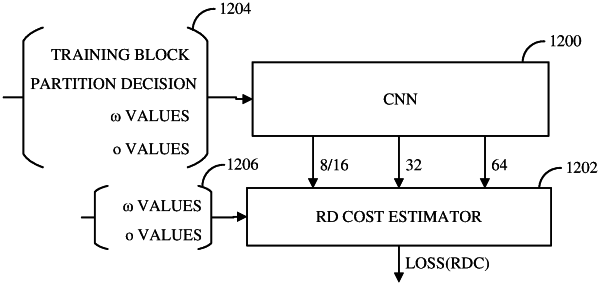| CPC H04N 19/147 (2014.11) [G06T 9/002 (2013.01); H04N 19/176 (2014.11); H04N 19/96 (2014.11)] | 20 Claims |

|
1. An apparatus, comprising:
a processor that is configured to:
receive training data comprising:
a plurality of training blocks; and
for a training block of the plurality of training blocks:
a plurality of partition decisions used by an encoder for encoding the training block; and
for each partition decision of the plurality of partition decisions,
a rate-distortion value resulting from encoding the training block using the partition decision; and
train a machine-learning model to output a partition decision for encoding an image block by:
inputting the training data into a neural network using a loss function comprising a combination of:
a partition loss function that is based upon a relationship between the partition decisions and respective predicted partitions; and
a rate-distortion cost loss function that is based upon a relationship between the rate-distortion values and respective predicted rate-distortion values.
|